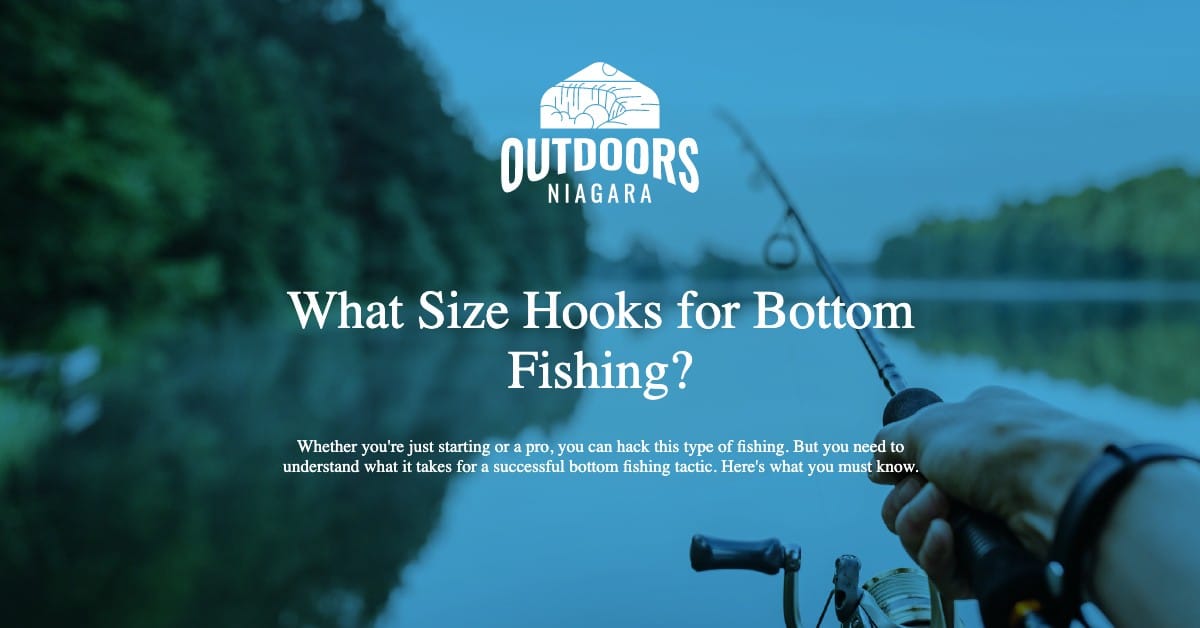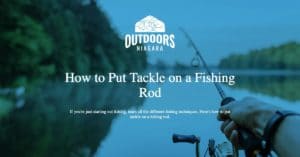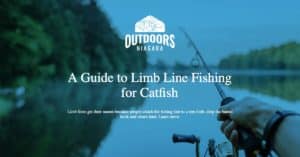If you are headed out to enjoy a day of bottom fishing, you no doubt are wondering what hook size you will need.
The answer is that you may need multiple-sized hooks depending on what you are targeting.
Contents
What Size Hooks Do you Need for Bottom Fishing?
If you are targeting big, monster fish, such as Marlin, you may need a 16/0 hook in the 6x range.
If you are fishing for whatever bites, you might need a hook that is 1/0 or 2.0 in size.
Understanding Hook Size
Hooks are rated in size based on a number followed by a slash (/) and then a zero.
Hook sizing looks like 10/0 which means the hook is a ten-aught hook.
Hook sizes move in both directions, the smallest hook is a 32 and the largest hook is a 19/0.
Notice the difference in how those numbers are written.
For hooks that are just numbers – larger numbers mean smaller hooks.
A 32 hook is the smallest hook. For hooks with number/0 format, the larger the number the larger the hook.
A 1/0 hook is smaller than a 2/0 hook.
Choosing the Right Hook Size for Bottom Fishing
Bottom fishing is the act of fishing for fish that live on the bottom of the ocean, lake, or river.
You can bottom fish in freshwater or saltwater.
How you determine the correct hook size has a lot to do with:
- the type of bait you use, and
- the species of fish you target.
For example, if you are fishing with soft plastic baits, you want to stick to hooks that are 1/0 in size for baits under 5-7 inches long.
For longer worms or soft plastic baits, you’d jump to a 2/0 hook.
If you are tossing soft plastics to bass, you might opt for a 3/0 hook to handle the extra weight of the fish.
For deep-sea bottom fish, you can start with a 2/0 circle hook and move up in size as you move up in fish size.
A 2/0 hook will handle small Tarpon but will be dwarfed by a big marlin. Specialty fishing requires specialty hooks.
In general, it’s recommended to use a 5/0 – 8/0 circle hook or larger for fish like grouper.
But you need to understand what it takes for a successful bottom fishing tactic and the right hook size. Let’s jump in.
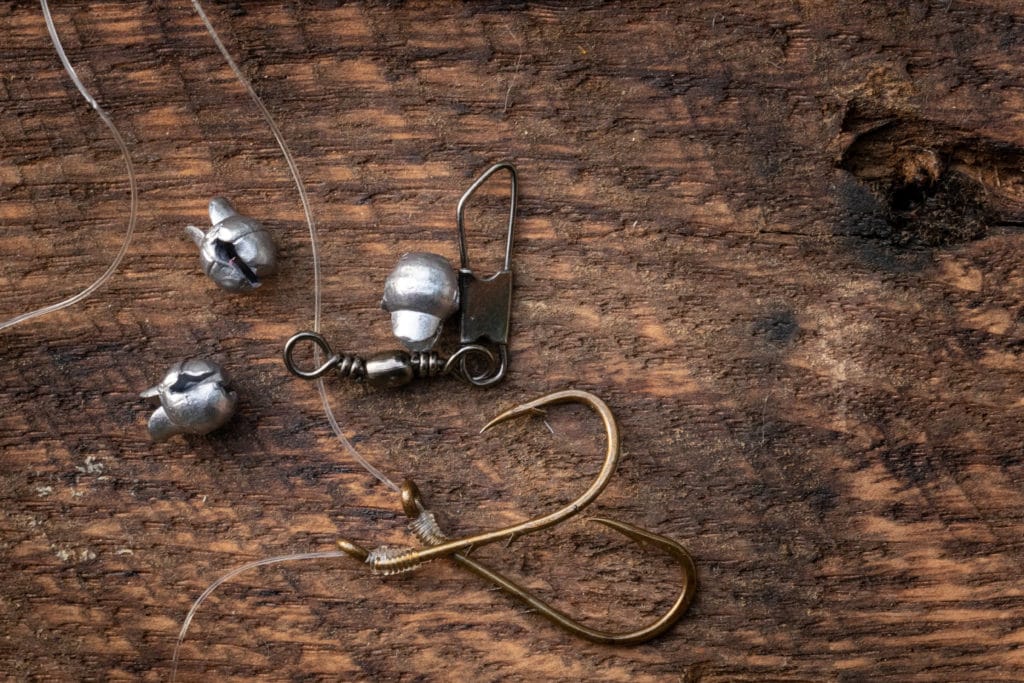
What is Bottom Fishing?
This is a straightforward fishing technique where you lower your weighted hook to the bottom of the water.
But don’t assume it’s as simple as it sounds.
You will encounter some challenges if you don’t follow the right guide.
With bottom fishing, you can apply different fishing styles depending on what you would love to catch and the type of water you are fishing from.
In addition, bait presentation should not stress you as you use various bait and tackle, making this fishing sport interesting and addictive.
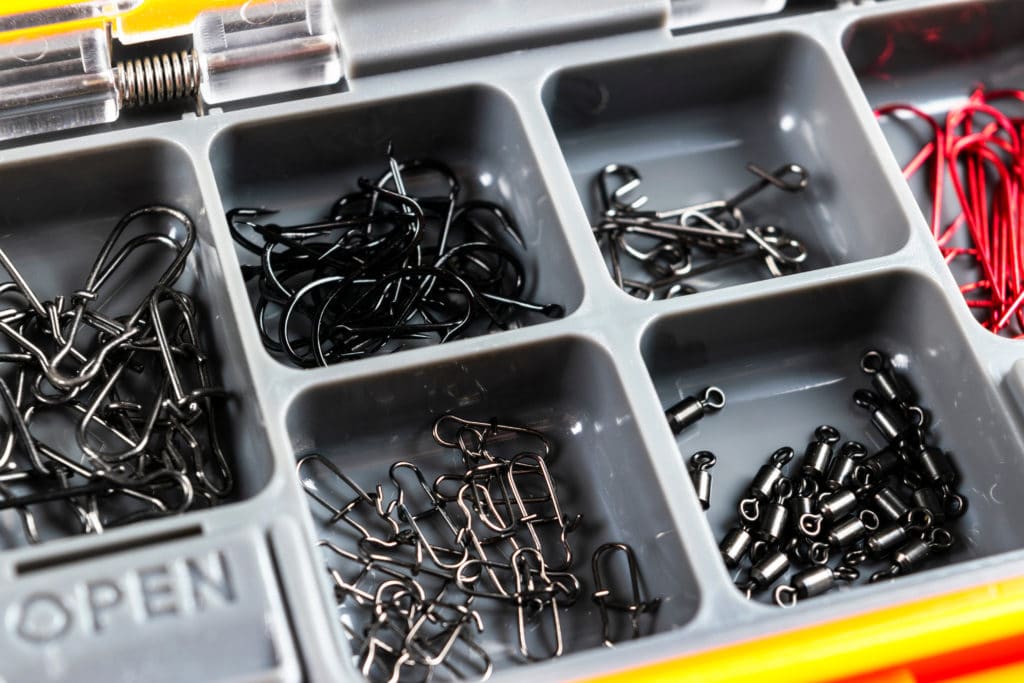
Where Do You Bottom Fish?
First, you should know that fish love underwater formations, wrecks, and even reefs which feel more like a treasure.
So at the bottom of an ocean and in freshwater, you can find different types of fish such as giant grouper, bass, and perch, among others.
It’s more like a fish shelter which gives you better chances of a successful fishing experience.
Below are the ideal places for bottom fishing:
- Freshwater fishing– This includes rocky bottoms, drop-offs, piers, and bridge pilings.
- Nearshore fishing– This includes wrecks and artificial and natural reefs.
- Shore fishing– Such as on piers and rocky banks.
- Offshore fishing– Like in rigs and artificial reefs.
What are the Essential Gears For Bottom Fishing?
Most outdoor sports demand proper preparation that includes getting the right gear.
Bottom fishing is no exception. However, it would help if you had the right fishing tools including hooks, line, and a sinker.
Let’s help you know more about this gear.
Sinkers help lower your lure to the bottom and come in different shapes and sizes.
You can either get an egg sinker, pyramid, or bank sinker.
You may go for heavier weight sinkers, especially bottom fishing in deep waters, but most anglers prefer lightweight objects.
Most of the successful catches by saltwater anglers have been through light sinkers.
Lines are what anglers toss at different distances to offer the bait to the fish.
You can either find mono, braided, or fluorocarbon lines, and whichever you prefer to use comes with its pros and cons.
For bottom fishing, it’s best to use fluorocarbon as it’s resistant and perfect for rocky bottoms, especially in clear waters.
Hooks come in many sizes and will be determined by the size of fish you want to capture.
Circle hooks are some of the ideal types for bottom fishing and are the easiest if you’re just starting out.
Types of Hooks
Below are the most effective fishing hooks for bottom fishing.
Circle hook: These contain a circular-like shape with a sharp tip that traps the corner mouth of fish easily.
Most anglers use circle hooks as their best for natural bait presentation, and they vary in style, gauge, and size.
Circle hooks are further classified into offset and inline circle hooks.
Pros
- Minimizes deep hooking, which increases fish survival in catch and releases while fishing.
- There’s an increased grip and landing rates for several species.
- The line is normally far from abrasive mouth surfaces, making it possible to employ lighter leaders/traces.
Treble hooks: The hook has three parts/hooks that give effective bait coverage, especially for artificial bait fishing.
Treble hooks minimize the chances of fish escaping into the water due to the various hook parts.
Some water bodies prohibit using this hook model, so it’s advisable to check the rules for different water bodies.
Worm hooks: Worm hooks contain many alternatives, including different eyes, wide gap, weighted, extra-wide gap, etc.
When bottom fishing for larger fish, you can use the hook for worms.
There’s a large gap between the hook point and the eye to hold large species of tubes, plastic worms, etc.
What are the Best Rigs For Bottom Fishing?
When selecting the rigs for bottom fishing, it’s best to know what will be the most effective of the many different rigs out here.
So to narrow down your search, check the following rigs for bottom fishing.
The chicken rig: Also called the spreader rig, it has two hooks that allow you to cover more area and is perfect for the rocky bottom.
The sliding sinker rig: Also called the Carolina rig, it is super effective. It is made of a basic barrel swivel attached to a single line with a sinker, ring, and hook at the tip.
A 3-way rig/ the drop rig: A 3-way swivel connects the leader mainline and the shorter sinker line. It’s great for surf fishing and holding your hook a few inches above the bottom.
Knocker rig: The knocker rig is a sliding sinker rig. The sinker is literally up to the hook’s eye to keep the bait firmly on the bottom. As a result, it’s easier to untangle snagged rigs, and rigging is quick and simple.
Bait
You can use different types of bait for various fishing methods, such as bottom fishing.
Some saltwater anglers find dead bait easy due to their availability in local tackle shops, but live bait makes a lot of difference.
It may be challenging to start with, but you can give it a shot the next time you go bottom fishing.
Live bait is perfect for large species.
Lures are also a great option, and there is a wide range of lure sizes and shapes.
But for new bottom fishers, lures may be a little tricky to use as they require some skills.
Conclusion
Bottom fishing is a great and fun-filled fishing sport.
But as simple as it sounds, you need to apply an effective technique and fishing gear to have a successful catch.
It’s best to select the right hook size; hook-type rig sinkers and bait makes the difference, especially for target species.
But the bottom fishing bar presentation should worry you as long as you have the right hook depending on the size of fish you want to catch.

